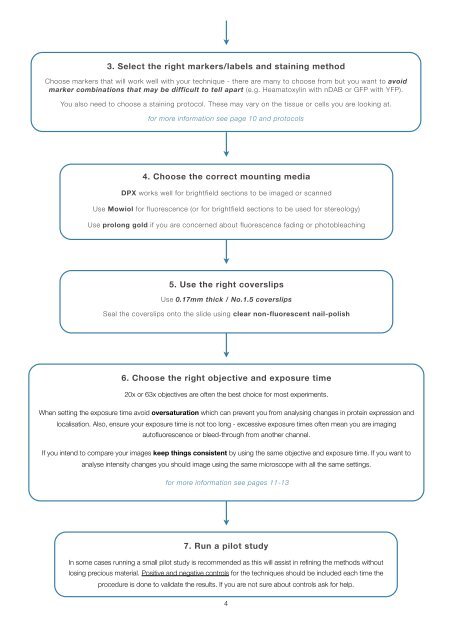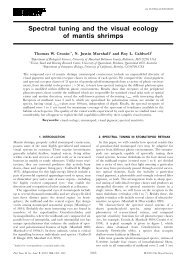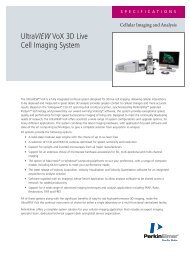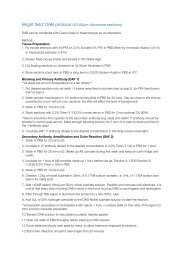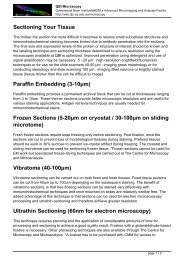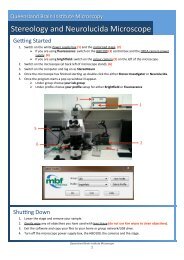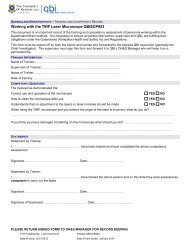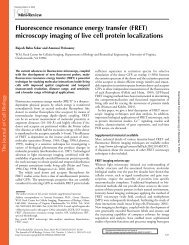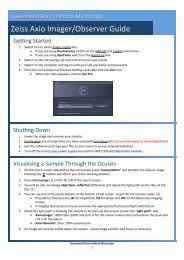QBI HISTOLOGY AND MICROSCOPY GUIDE
QBI HISTOLOGY AND MICROSCOPY GUIDE
QBI HISTOLOGY AND MICROSCOPY GUIDE
You also want an ePaper? Increase the reach of your titles
YUMPU automatically turns print PDFs into web optimized ePapers that Google loves.
3. Select the right markers/labels and staining method<br />
Choose markers that will work well with your technique - there are many to choose from but you want to avoid<br />
marker combinations that may be difficult to tell apart (e.g. Heamatoxylin with nDAB or GFP with YFP).<br />
You also need to choose a staining protocol. These may vary on the tissue or cells you are looking at.<br />
for more information see page 10 and protocols<br />
4. Choose the correct mounting media<br />
DPX works well for brightfield sections to be imaged or scanned<br />
Use Mowiol for fluorescence (or for brightfield sections to be used for stereology)<br />
Use prolong gold if you are concerned about fluorescence fading or photobleaching<br />
5. Use the right coverslips<br />
Use 0.17mm thick / No.1.5 coverslips<br />
Seal the coverslips onto the slide using clear non-fluorescent nail-polish<br />
6. Choose the right objective and exposure time<br />
20x or 63x objectives are often the best choice for most experiments.<br />
When setting the exposure time avoid oversaturation which can prevent you from analysing changes in protein expression and<br />
localisation. Also, ensure your exposure time is not too long - excessive exposure times often mean you are imaging<br />
autofluorescence or bleed-through from another channel.<br />
If you intend to compare your images keep things consistent by using the same objective and exposure time. If you want to<br />
analyse intensity changes you should image using the same microscope with all the same settings.<br />
for more information see pages 11-13<br />
7. Run a pilot study<br />
In some cases running a small pilot study is recommended as this will assist in refining the methods without<br />
losing precious material. Positive and negative controls for the techniques should be included each time the<br />
procedure is done to validate the results. If you are not sure about controls ask for help.<br />
4


